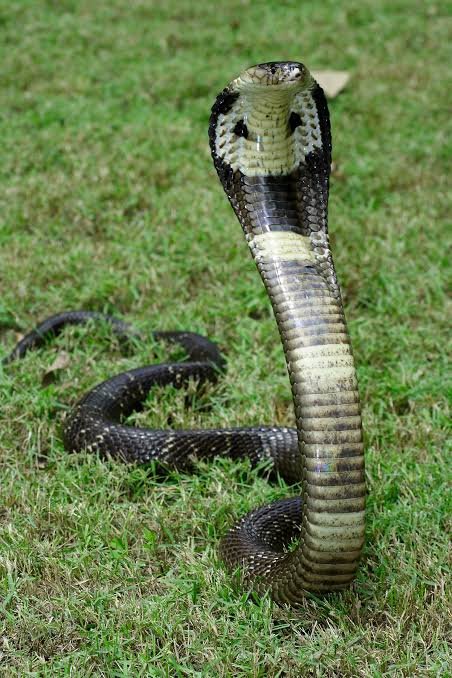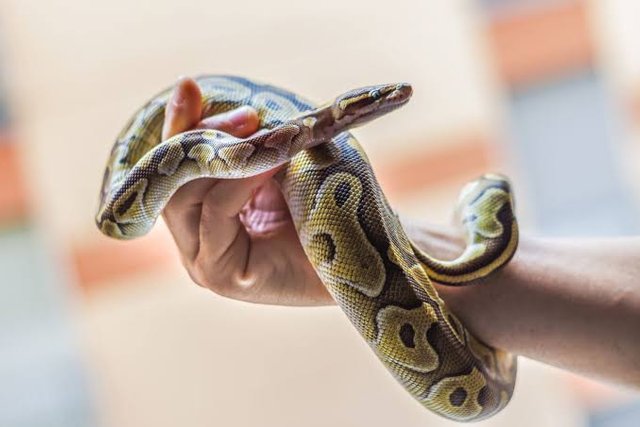Features of Snakes that makes it different from other pets by @mato445
Introduction
Snake makes a good pet, as a lover of snakes I will highlight some of the feature of snake that makes it different from other pets.
Features of Snakes that makes it different from other pets

Snake's skin is covered in leathery scales. Contrary to popular misconception, the skin is smooth, often shiny, and dry to the touch. Snakes are not slimy. Since snakes are ectotherms (their body temperature is determined by their environmental temperature), the temperature of their skin reflects the surrounding temperature, and if the surrounding temperature is cold, their skin feels wet.
Snakes have coverings over their eyelids called spectacles, instead of eyelids, and their eyes are open all the time.
Snakes shed their skin every few weeks as they grow. A healthy snake in a healthy environment sheds its old skin in one piece. If it does not, and pieces of old skin are retained on the body after a shed, your veterinarian should check the snake to ensure there is no underlying infection or problem with inadequate humidity.
Snakes, like all reptiles, are ectotherms, so they are dependent on external or environmental sources of heat to maintain their own body heat.
Snakes swallow their food whole. There are no vegetarian snakes; all species are carnivores. Their diet depends on the species of snake. Some will specifically eat warm-blooded prey (e.g., rodents, rabbits, birds), while others eat insects, amphibians (frogs and toads), eggs, other reptiles, fish, earthworms, or slugs.
Snakes have a cloaca, a chamber at the hind end of the snake into which the urinary, digestive, and reproductive tracts all empty. The cloaca empties to the outside through the vent found on the snake’s underside, at the base of the tail. They defecate, urinate, and reproduce through the cloaca. By inserting a special probe carefully in the cloacal area, a knowledgeable veterinarian can tell the sex of the snake.
Snakes have no limbs, but it has been suggested that the two spurs that are present on either side of the vent of boas and pythons represent vestigial limbs.
Snakes have numerous pairs of ribs running the length of their body.
Snakes have three-chambered hearts, whereas mammals and birds have four-chambered hearts.
Snakes have no diaphragm; this prevents them from being able to cough or clear their airways of mucus. As a result, snakes with simple respiratory infections may develop pneumonia.
Males have two reproductive organs, called hemipenes, which are found just inside the vent.
Conclusios
This article is base on some research I made online
Cc: @steemcurator01
Cc: @steemcurator02
